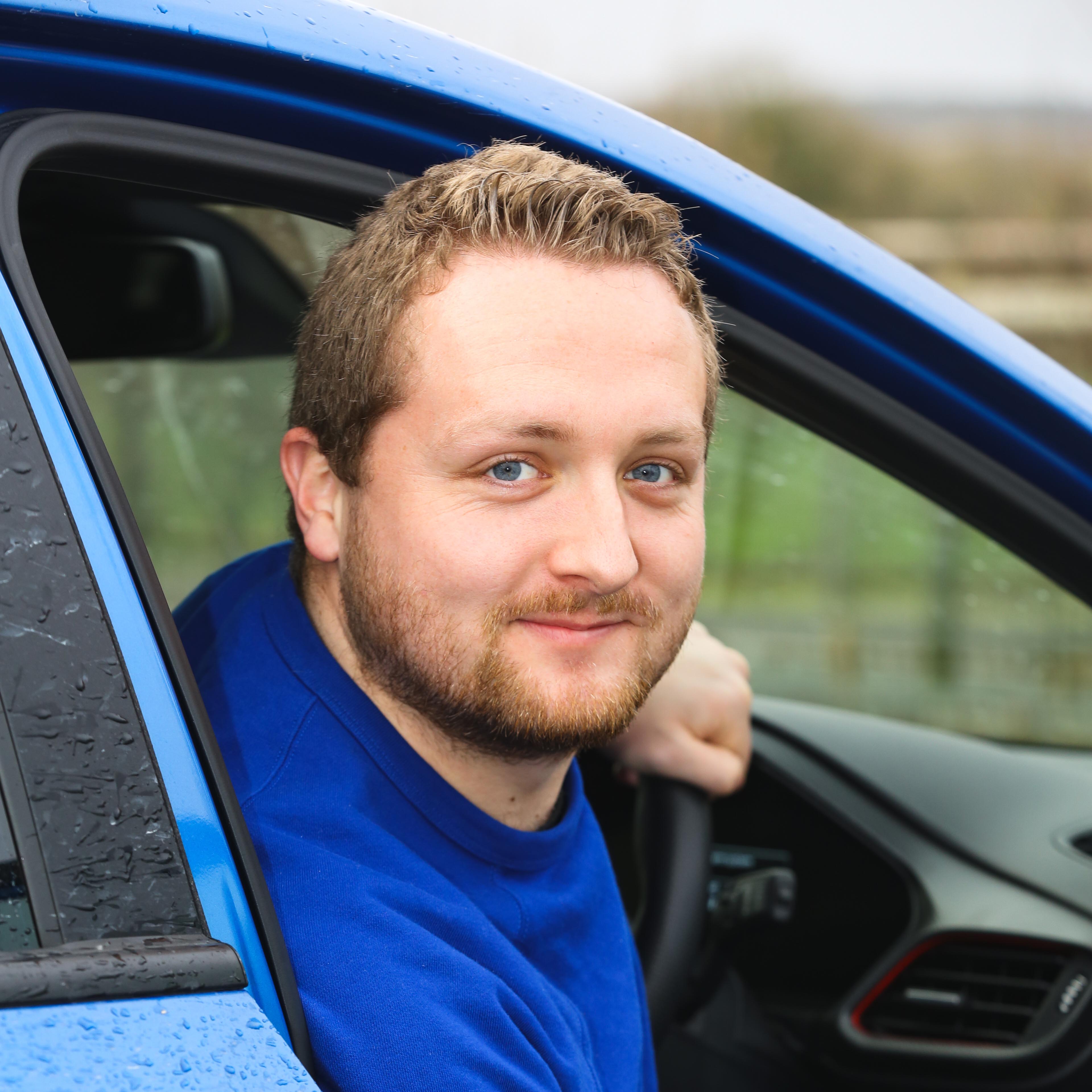
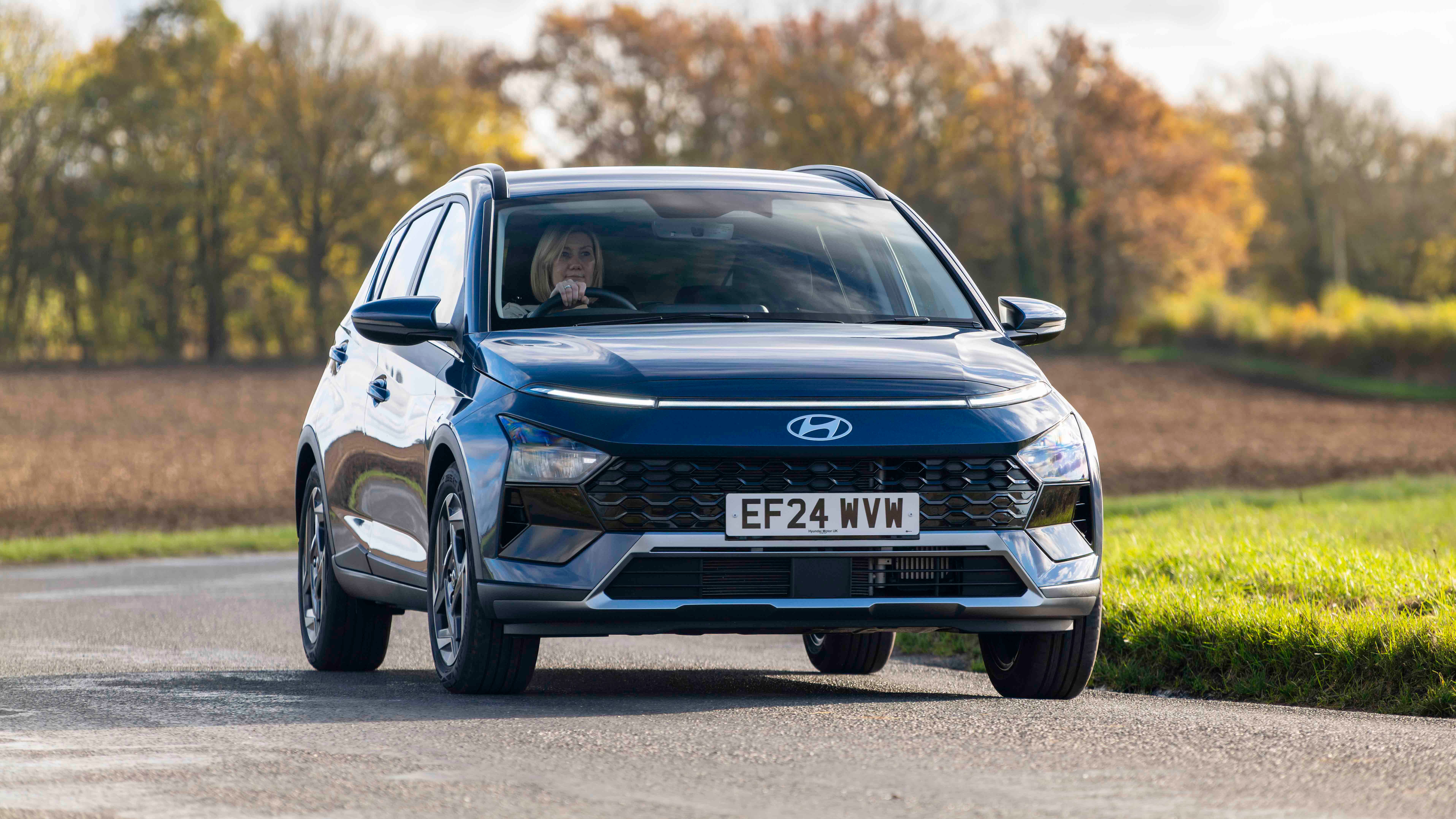
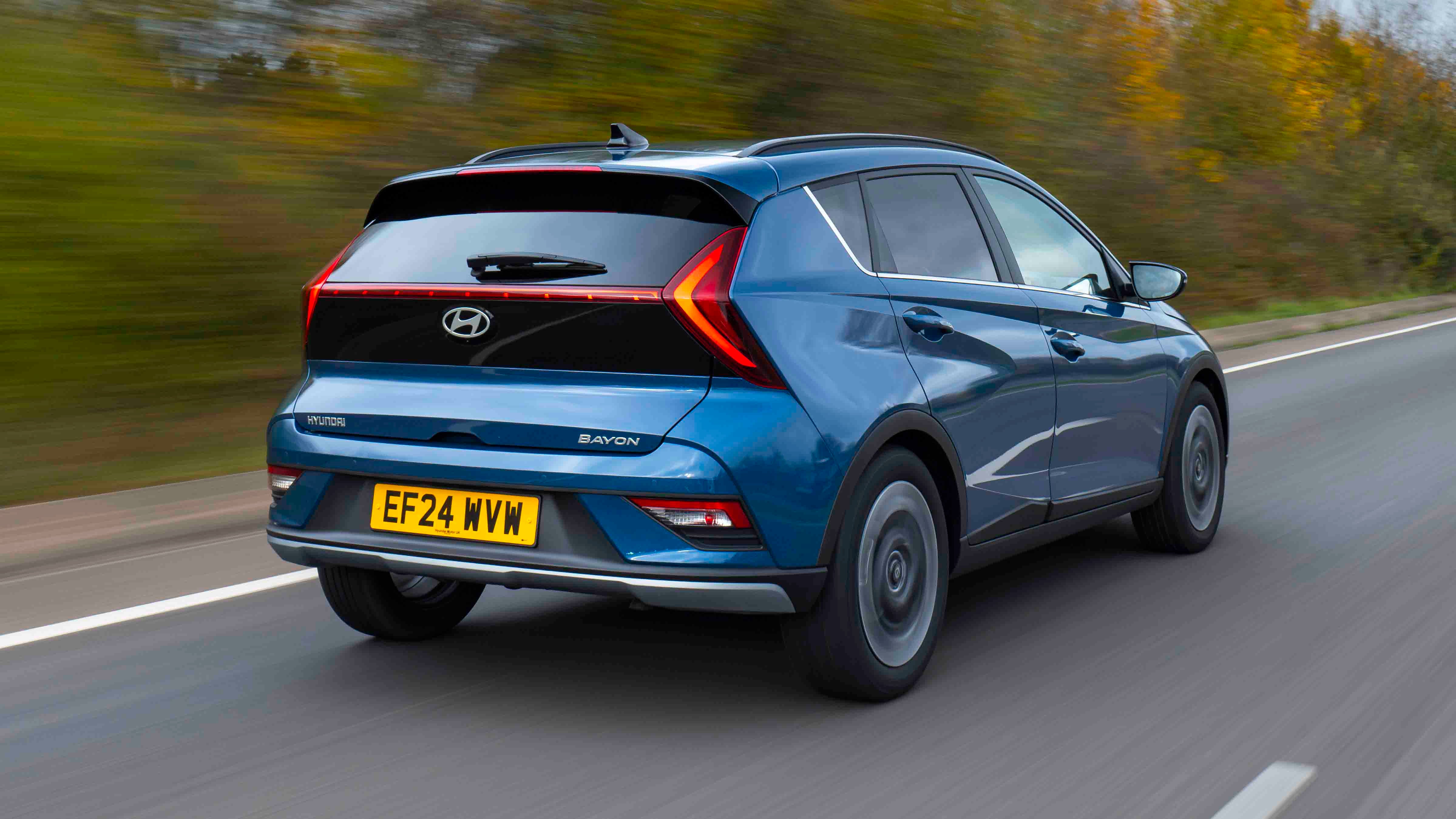
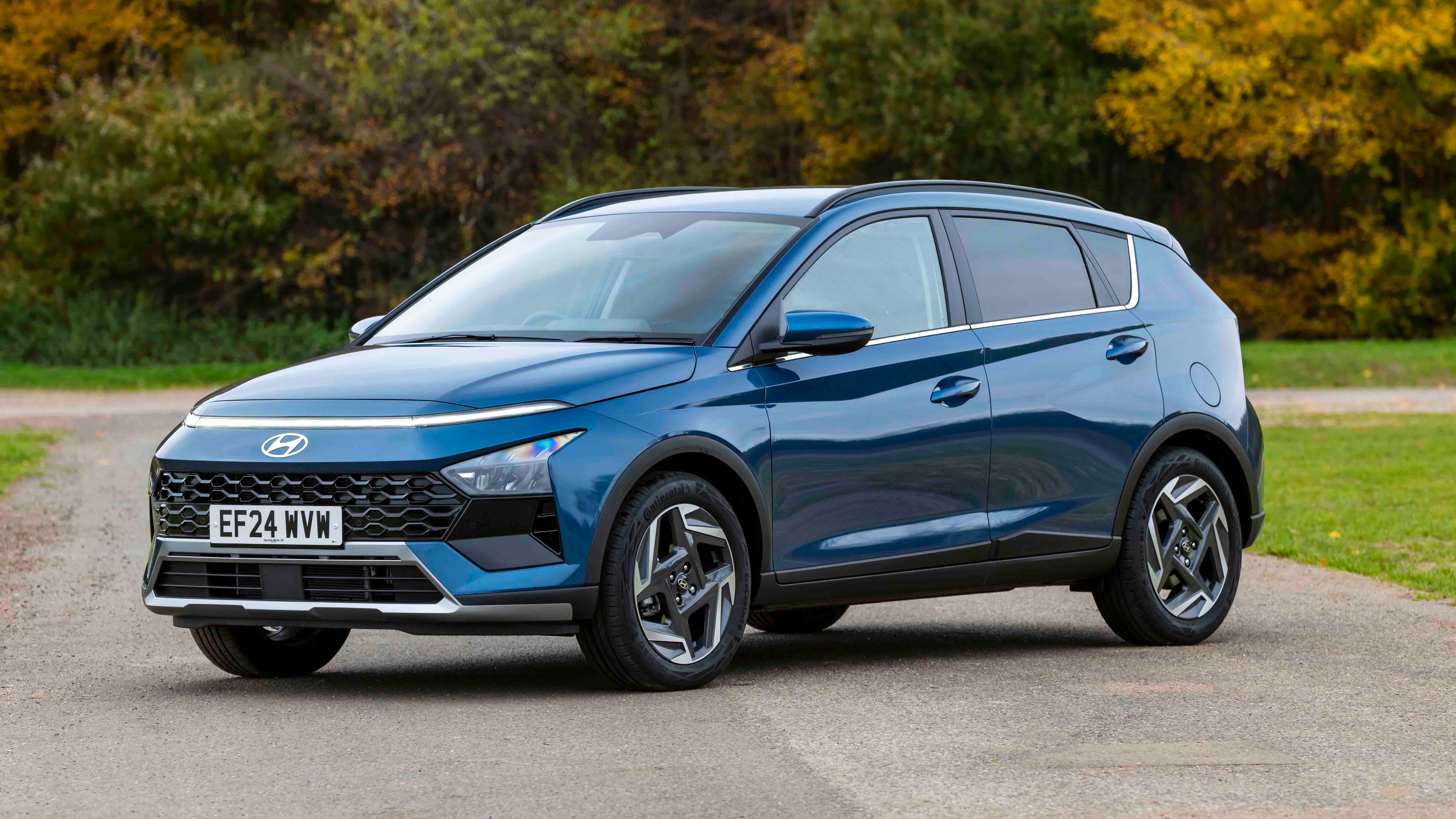
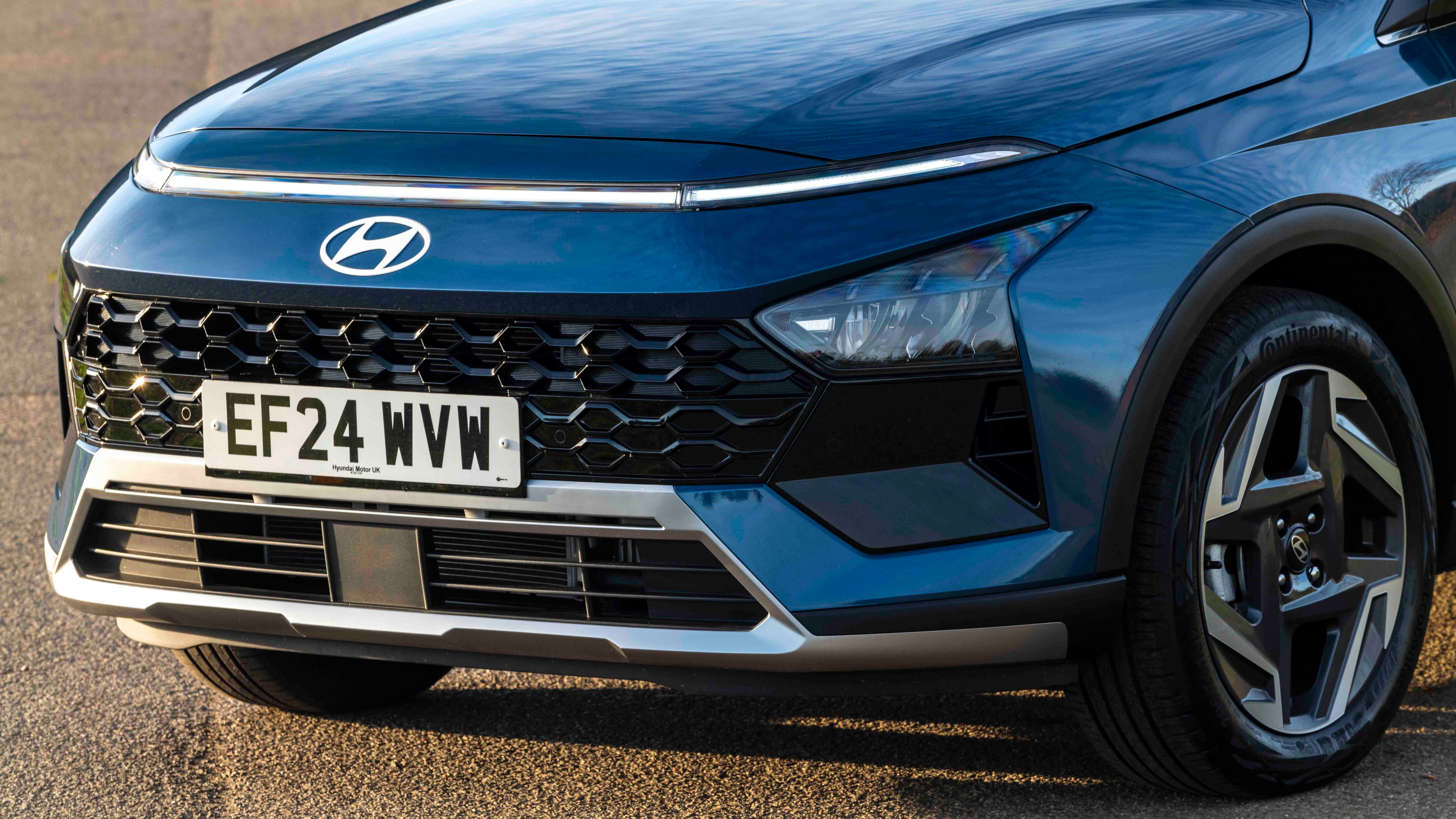
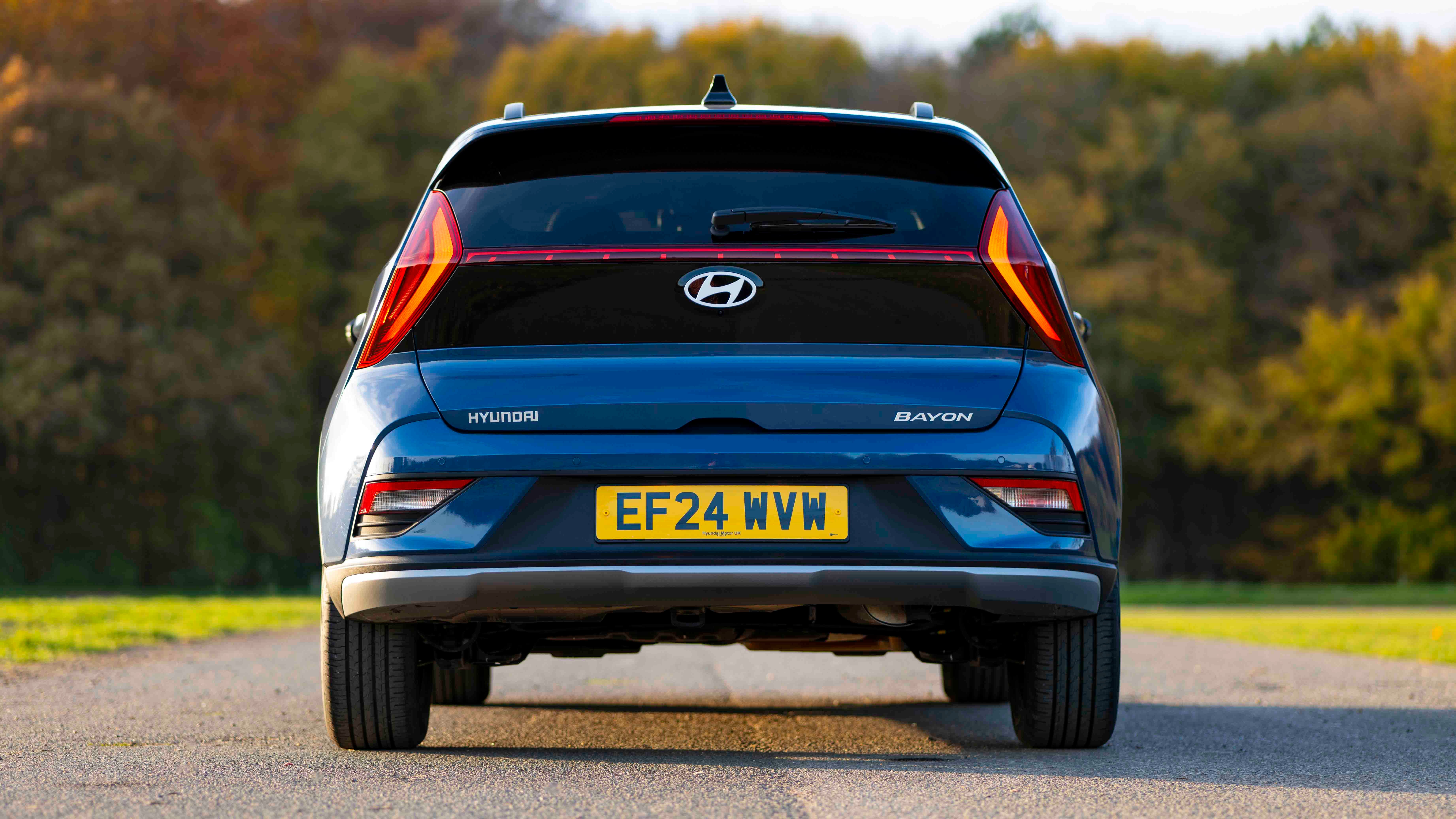

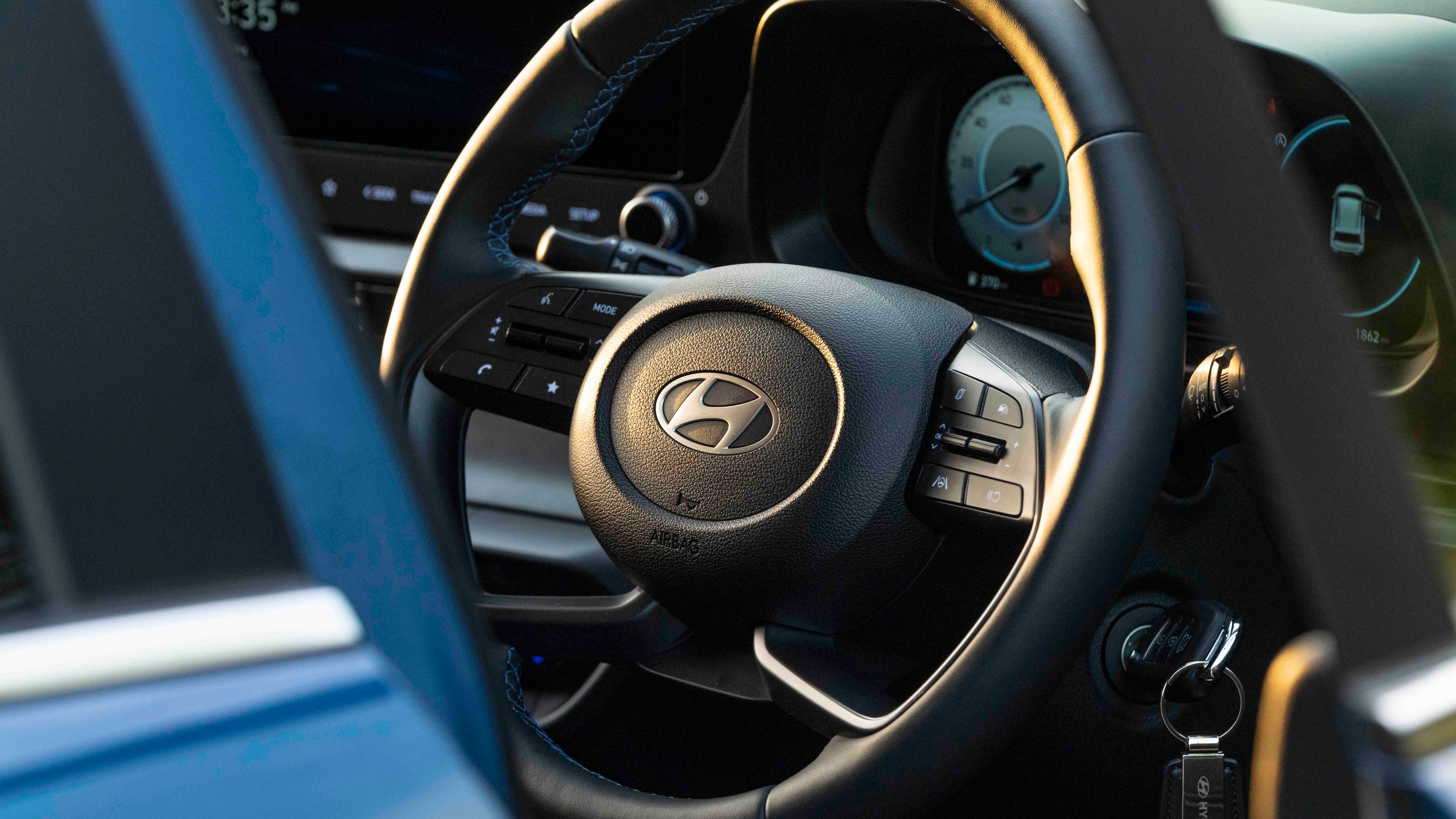
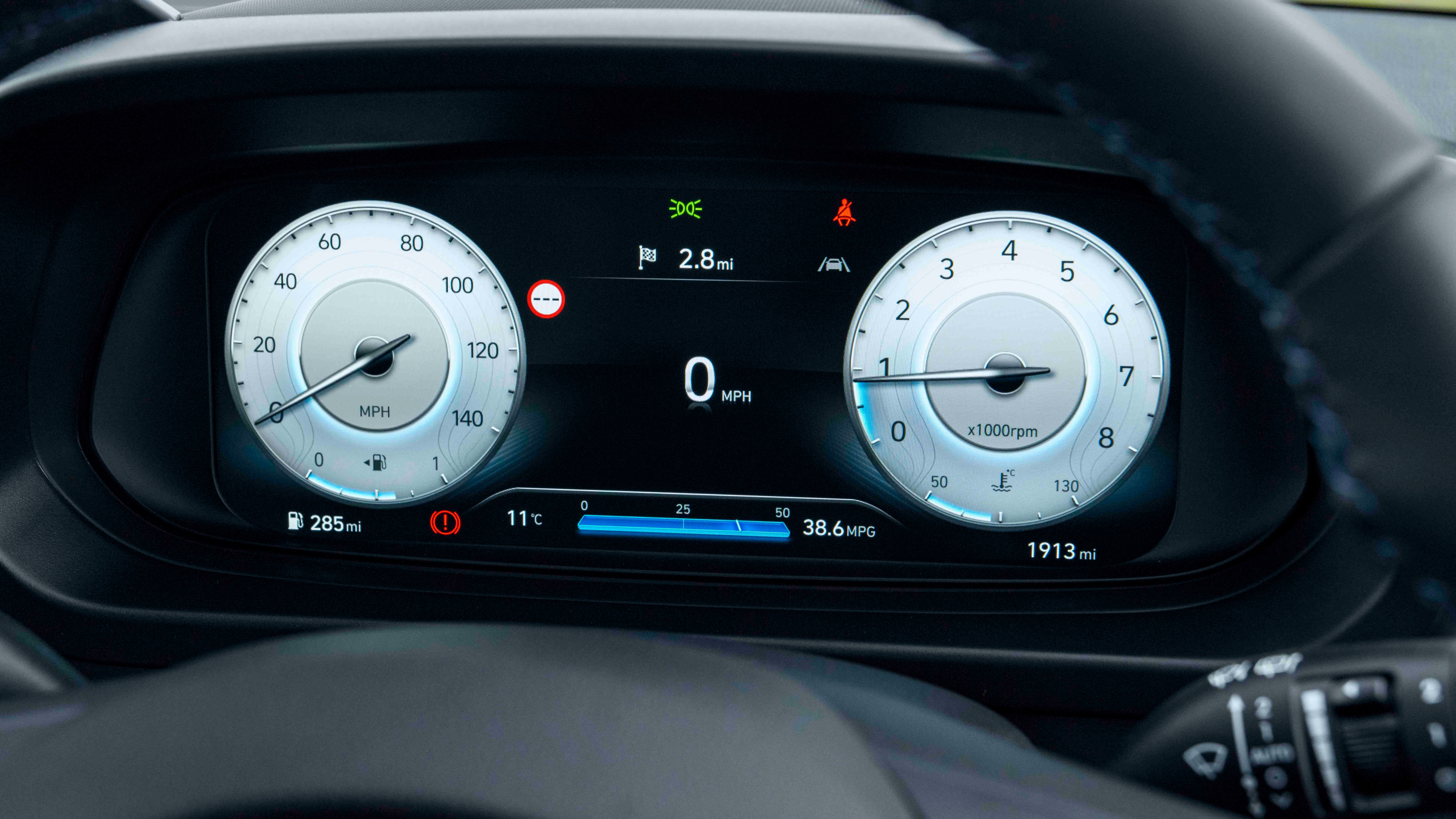
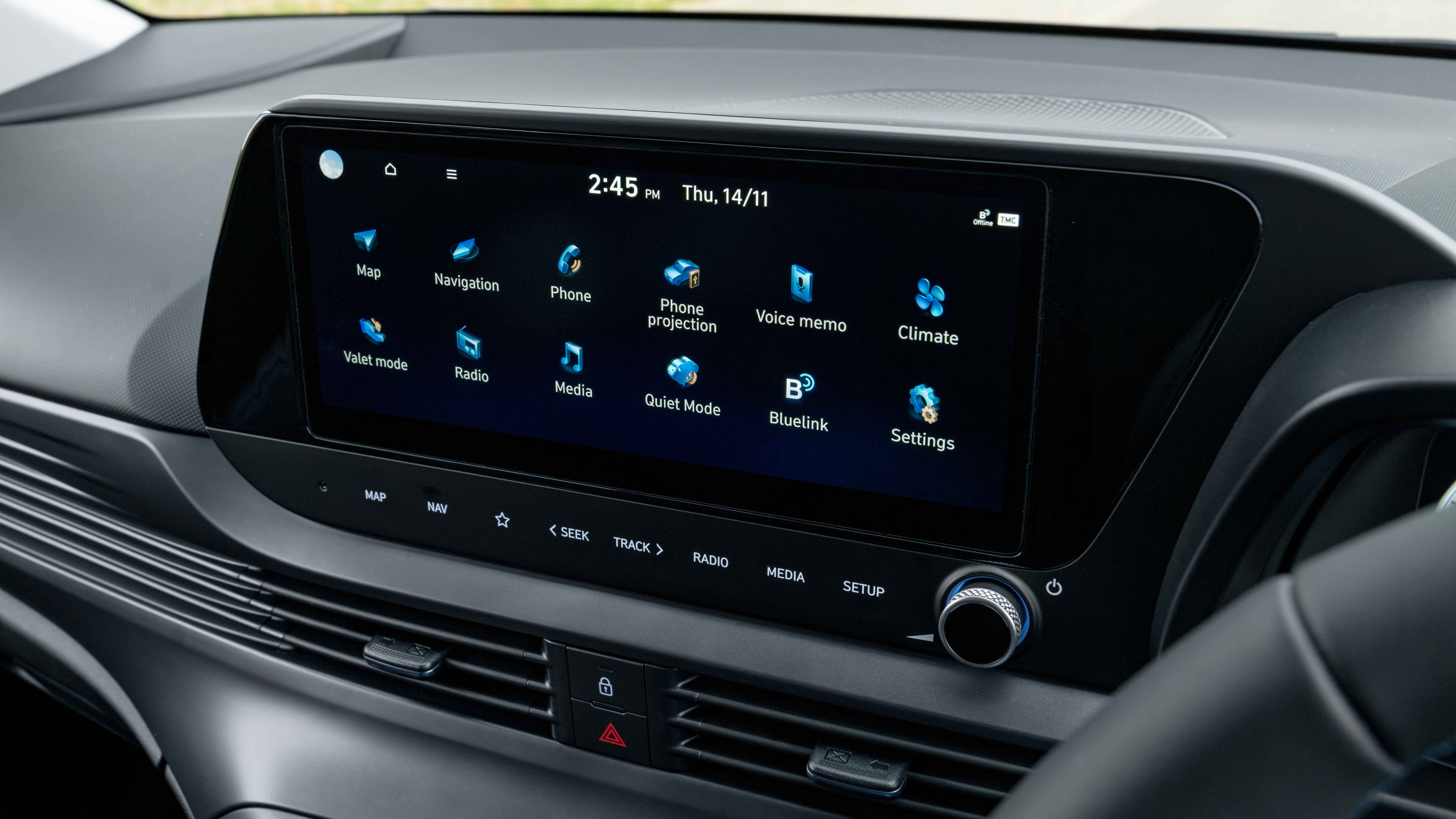
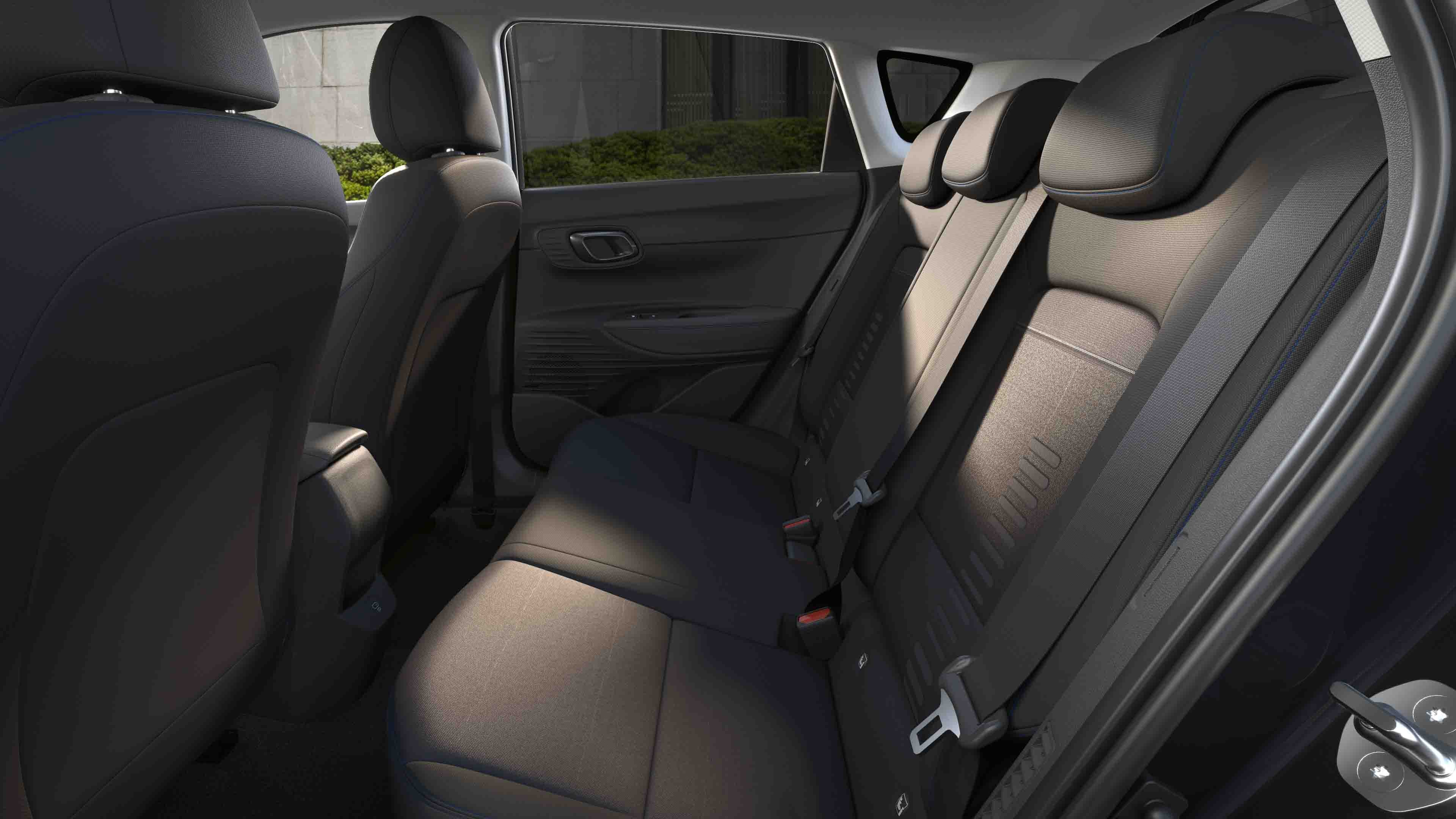
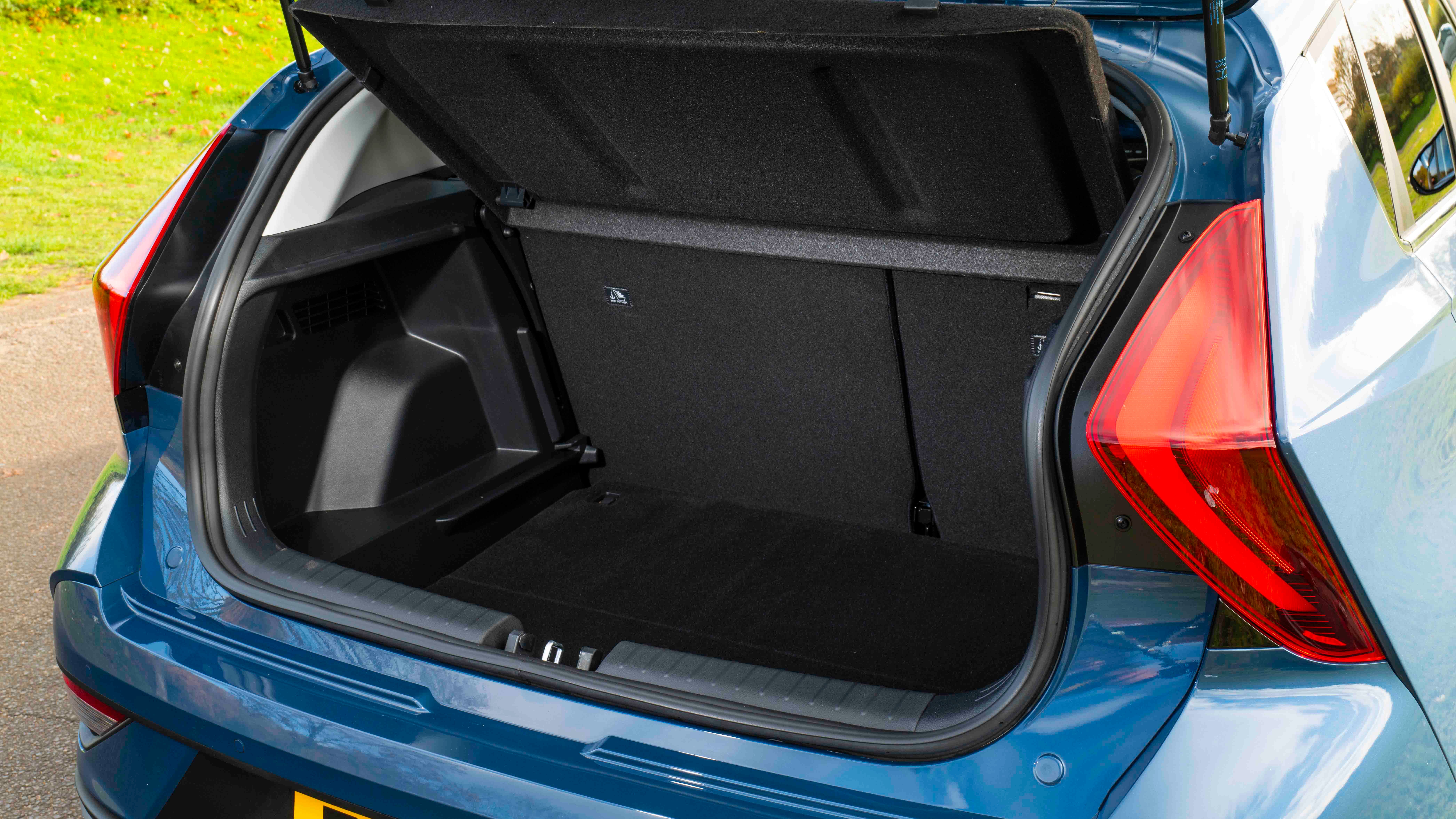
Hyundai Bayon Review

The Hyundai Bayon is the brand’s smallest SUV, and is based on the talented i20 supermini.
It promises to be reliable, economical and easy to drive. Just don’t expect any excitement whatsoever.
- Lots of technology
- Good legroom
- Strong build quality
- Some cheap interior materials
- Doesn’t stand out in any area
- Small boot in mild-hybrid models
Should I buy a Hyundai Bayon?
If you like the way the Hyundai Bayon looks, chances are you’ll find the rest of it perfectly agreeable. The styling is perhaps the most exciting part of the Bayon, with a futuristic split-headlight design at the front and arrow-like tail-lights darting across the bootlid at the back. Add in some sharp creases inspired by the bigger Hyundai Tucson, and the option of a contrast-coloured roof, and the Bayon certainly looks pretty interesting.
The stylish design continues a little inside, but otherwise there’s little to get excited about. That’s not to say the Bayon is a bad car – in isolation it ticks pretty much all the small SUV boxes. It’s just that it doesn’t stand out in one particular area.
"Want something easy-going and relaxed? You'll love the Bayon"
Some rivals are cheaper, or better to drive, or have a bigger boot, or are slightly more comfortable. The Bayon hits most of these areas well enough, so it’ll suit the needs of the majority of small SUV buyers.
While the showroom sheen could fade a little quickly, the Bayon promises to be a delight to live with. It’s easy to drive, promises to be reliable – and there’s the backup of a five-year warranty – and insurance and fuel costs are low enough not to keep you awake at night.
Interior and technology

The Bayon shares its interior with the Hyundai i20, and that’s no bad thing. The way the air vent slats build into a ridged dashboard design that curves onto the doors is nice. It kind of reminds us of the iconic side strakes on a Ferrari Testarossa.
And the technology you get reminds us of bigger and costlier Hyundai models. You get a big touchscreen and digital dials, which are both sharp and responsive. There are a row of shortcut keys to easily get to different areas of the touchscreen, and a couple of the buttons are configurable and can be set to your most-used functions.

The infotainment tech is also well integrated with the driver assistance tech – for example, on models with blind-spot monitoring, you get a camera view in the digital dials when you indicate.
It’d be unfair to expect premium materials in the Bayon, but the material choices do remind you that you haven’t paid Tucson money. Some of the plastics are cheap and scratchy, and having the dashboard trim in grey (on top-spec models) ends up highlighting the materials. Still, everything seems well put together and the durable materials will be easy to clean.

Entry-level SE Connect trim doesn’t feel basic whatsoever, with a reversing camera, alloy wheels, cruise control, air conditioning, lane-keep assist and a touchscreen with Apple CarPlay and Android Auto. SE Connect was later replaced by the Advance trim, which gained a bigger touchscreen and LED headlights.
Mid-range Premium trim adds heated front seats, bigger wheels, a heated steering wheel, front parking sensors and climate control. Top-spec Ultimate has keyless entry, a Bose sound system, a sunroof and wireless phone charging.
Practicality

The Bayon packs quite a lot of space into its 4.18-metre length. There’s plenty of legroom for four tall-ish adults to get comfortable, and headroom is good too. Rear-seat space is definitely more welcoming than it is in the Ford Puma, and close to our favourite, the Skoda Kamiq.
Only having one map pocket is a bit of a cheap choice, but there’s also a socket to charge your phone and the same interesting strakes as on the front door cards. We’d like the Isofix points to be more easily accessible; at least the Bayon’s SUV billing makes it a little easier to get kids in than it is in the slightly lower i20.

On paper, the Bayon offers a 411-litre boot space, which is on a par with all the top choices in the class. That’s noticeably more than an i20, and a little bit more than longer cars such as the Volkswagen Golf or Ford Focus.
Despite only having a tiny amount of electrical assistance, mild-hybrid versions of the Bayon somehow lose 90 litres of boot space. The difference is likely to be under the boot floor – which you’ll have to use if you want to carry the same sort of luggage in a Bayon that you’d get in a Golf or Focus. The boot itself feels quite narrow, too.
Engines and performance

The Bayon is one of a number of small SUVs that come with a turbocharged 1.0-litre petrol engine. It’s the only option and Hyundai’s engine is pretty good, if not particularly remarkable.
And there’s now only one power option, so every Bayon gets a nice, round 100hp. It feels peppy in the smaller i20 but less so in the Bayon – which is represented by its adequate 0-62mph time of around 11.5 seconds.

Six-speed manual and seven-speed automatic gearboxes are available. Neither are the worst to use, nor class-leading. The manual could be tighter and more satisfying, and there’s a noticeable slurring between first and second gear that doesn’t make you look like a smooth driver – something that the now-discontinued mild-hybrid tech helped to overcome. The auto, meanwhile, could be a bit quicker to make up its mind.
The manual is cheaper, the auto is easier. Both are said to manage 51mpg. Mild-hybrid versions boost that by 2mpg. Insurance groups are pretty low to keep costs reasonable.
Driving and comfort

Hyundai has almost strived to make the Bayon completely unremarkable in its driving experience. And that’s not a bad thing – it’s easy-going and relaxed, and simply gets on with the job of ferrying you to your destination.
It seems like the Bayon has been tuned to be right in the middle of its European rivals in terms of comfort and handling. Both are good enough, and nothing will upset you about how the Bayon drives.
If you’re wanting a little more than a functional tool to get you from A to B, you might want to check out the Ford Puma or Nissan Juke. Meanwhile, the Citroen C3 Aircross is a fraction more comfortable, although nowhere near as fancy as the Bayon inside.































